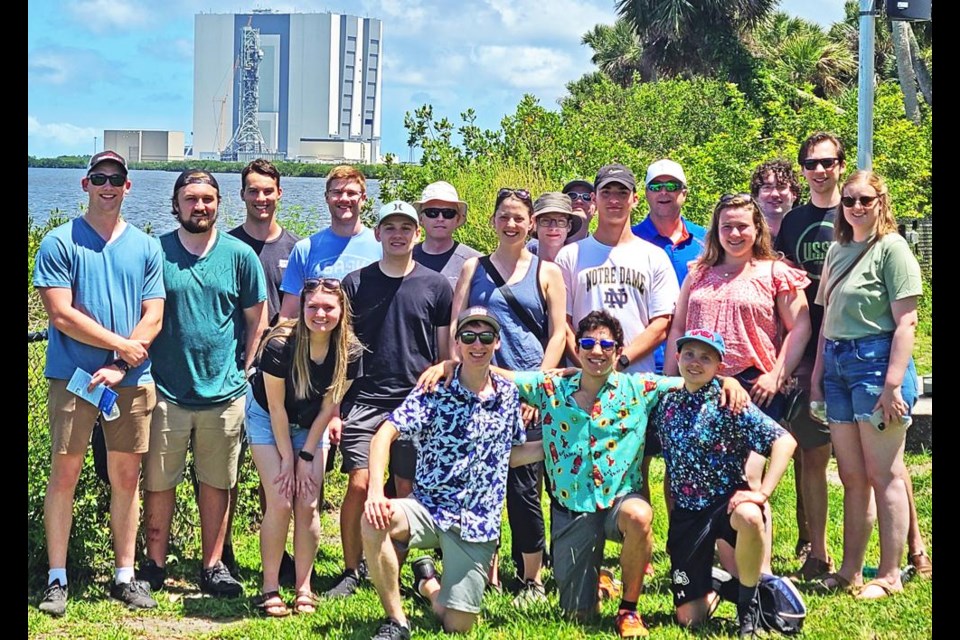WEYBURN – The University of Saskatchewan’s Space Design Team, including Weyburn engineering student Arliss Sidloski, were able to watch the launch of their cube satellite on a SpaceX rocket from the Kennedy Space Center in Florida on Monday.
“We watched the launch of a Starlink mission on a SpaceX Falcon 9 (on Sunday). Watching the launch and hearing the thunderous roar of the rocket was an incredible experience. Today’s launch of SpaceX CRS-28 was even more special as it meant that RADSAT-SK, the culmination of five years of hard work, was finally going to space. RADSAT-SK is now in space and soon to be in orbit,” she said on Monday, after watching the launch with her team.
The cubesats are scheduled to be deployed from the space station on July 10, and the USask team will be monitoring their satellite from a ground station in Saskatoon.
The SpaceX Falcon 9 rocket carrying the Dragon capsule lifted off from Launch Complex 39A at NASA’s Kennedy Space Center in Florida on June 5, on the company’s 28th Commercial Resupply Services mission for the agency to the International Space Station. Dragon delivered approximately 7,000 pounds of crew supplies, equipment, and science experiments to the orbiting laboratory.
The launch was initially set for Saturday, but was scrubbed and moved to Monday, which gave the USask students more time to do some sight-seeing and try surfing off the Florida coast.
“We went surfing at the beach on Wednesday, visited Disney Hollywood on Thursday, and toured Kennedy Space Center on Friday. Since the launch originally set for Saturday was scrubbed early on, we went mini-golfing, then attended a get-together with the Canadian Space Agency and the other Canadian CubeSat teams that are on this launch,” said Sidloski.
“Sunday morning we watched the sunrise on the beach and then the Starlink launch, then spent the rest of the day lounging on the beach and surfing.”
The RADSAT-SK CubeSat Project is a partnership between the Canadian Space Agency (their biggest partner), the USask College of Engineering, Saskatchewan Polytechnic, and the USask Space Design Team.
Arliss is in her second year as president of the USask Space Design Team, and she is one of the technical project managers for the cube satellite project.
She explained that once the satellite is launched from the space station, it will initially be in the same orbit. The cube satellite doesn’t have its own propulsion system, so it will last for about a year before Earth’s gravity draws it in, and the unit will eventually burn up in the atmosphere.
To watch NASA’s broadcast of the rocket launch, go to https://www.youtube.com/watch?v=Z_h-ho2w_0Y




